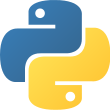Life scientists today urgently need training in bioinformatics skills. Too many bioinformatics programs are poorly written and barely maintained, usually by students and researchers who've never learned basic programming skills. This practical guide shows postdoc bioinformatics professionals and students how to exploit the best parts of Python to solve problems in biology while creating documented, tested, reproducible software.
Ken Youens-Clark, author of Tiny Python Projects (Manning), demonstrates not only how to write effective Python code but also how to use tests to write and refactor scientific programs. You'll learn the latest Python features and tools including linters, formatters, type checkers, and tests to create documented and tested programs. You'll also tackle 14 challenges in Rosalind, a problem-solving platform for learning bioinformatics and programming.
- Create command-line Python programs to document and validate parameters
- Write tests to verify refactor programs and confirm they're correct
- Address bioinformatics ideas using Python data structures and modules such as Biopython
- Create reproducible shortcuts and workflows using makefiles
- Parse essential bioinformatics file formats such as FASTA and FASTQ
- Find patterns of text using regular expressions
- Use higher-order functions in Python like filter(), map(), and reduce()
 Language
Language
 Reading time
Reading time
 What you will learn
What you will learn
 Author
Author
 Published
Published
